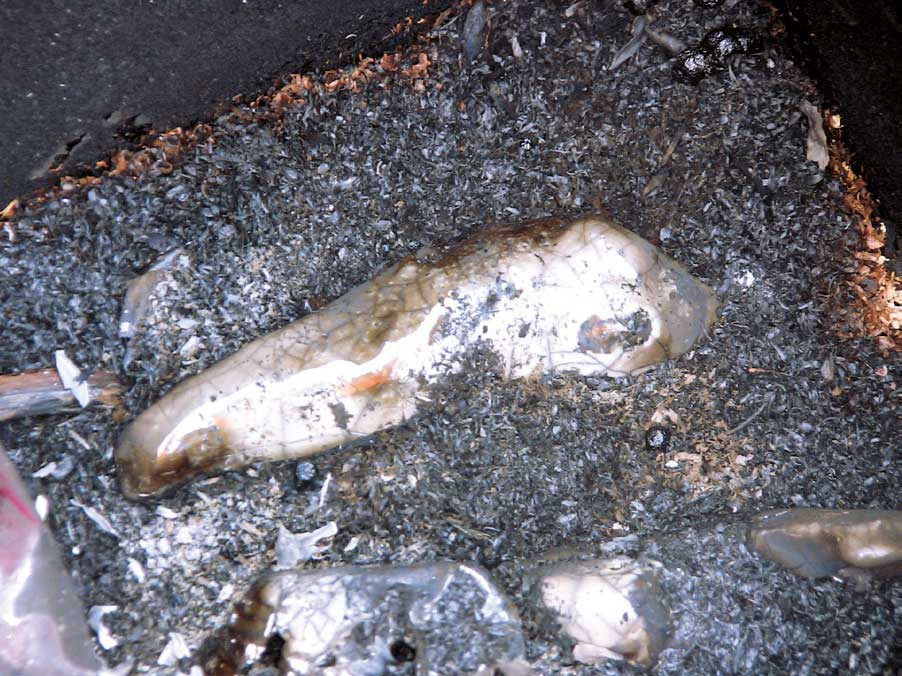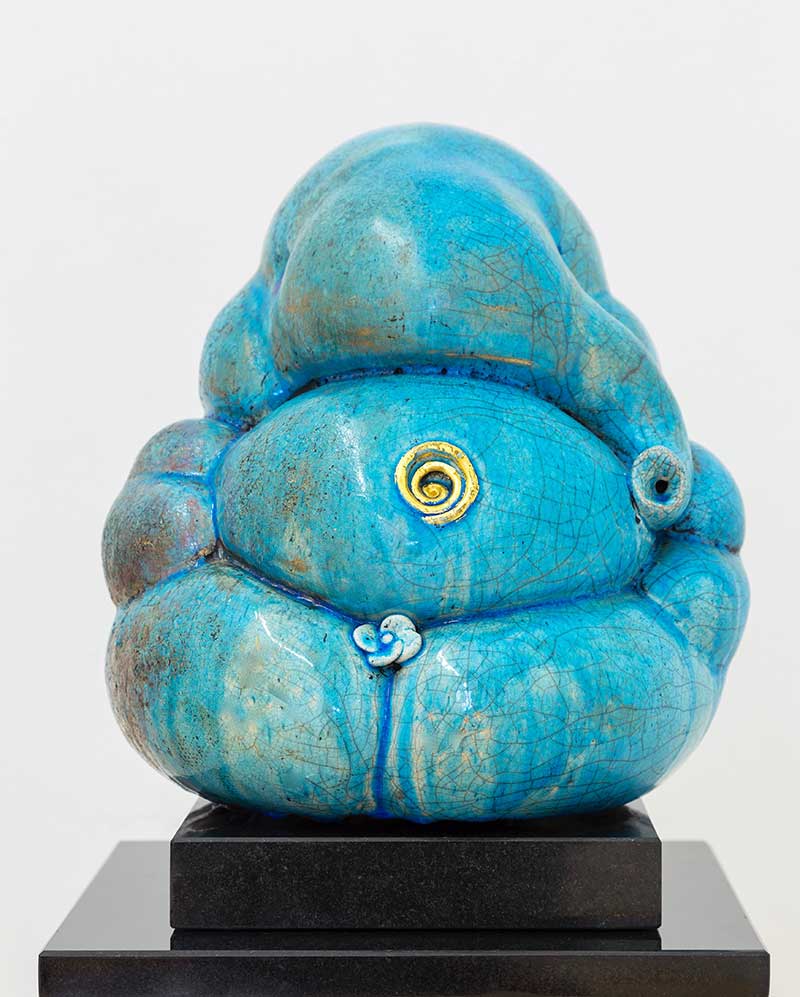Ceramics Technique
The sculptures of Brigitte Saugstad are uniquely hand modelled.
Preferred material is high firing white or red porcelain stoneware.
The sculptures are painted and glazed with various underglaze colours and glazes. Individual figures are gilded with real liquid bright gold for ceramics. This liquid bright gold is applied to the glaze and fused with the glaze in a third firing.
Certain sculptures are decorated with high-quality crystal stones.
Some works are made using the old Japanese Raku technique and some are gilded with 23.5 carat gold leaf.
Ganesha from the beginning to completion:
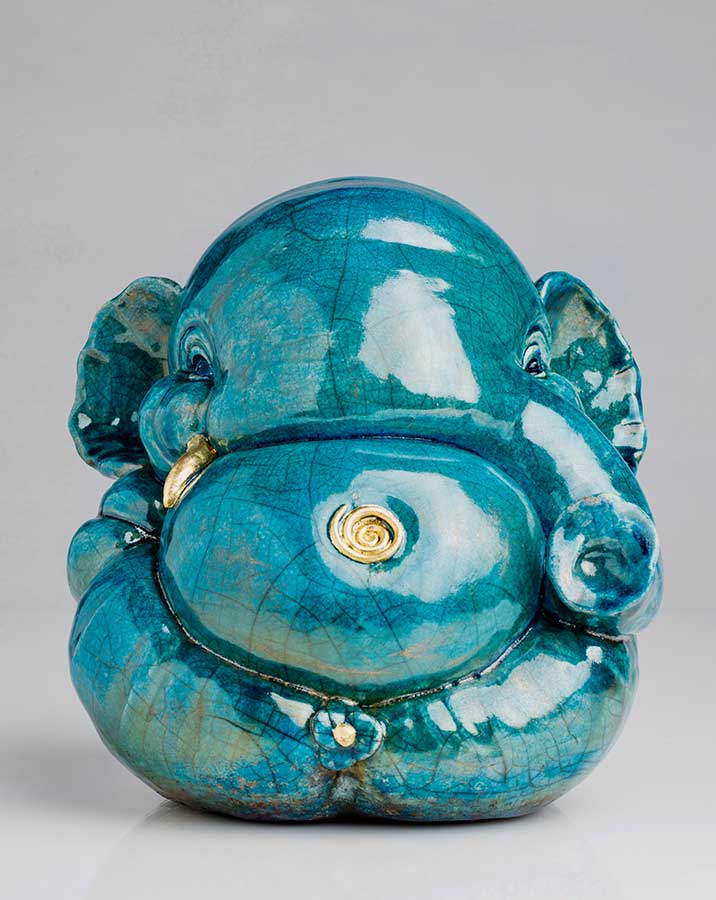
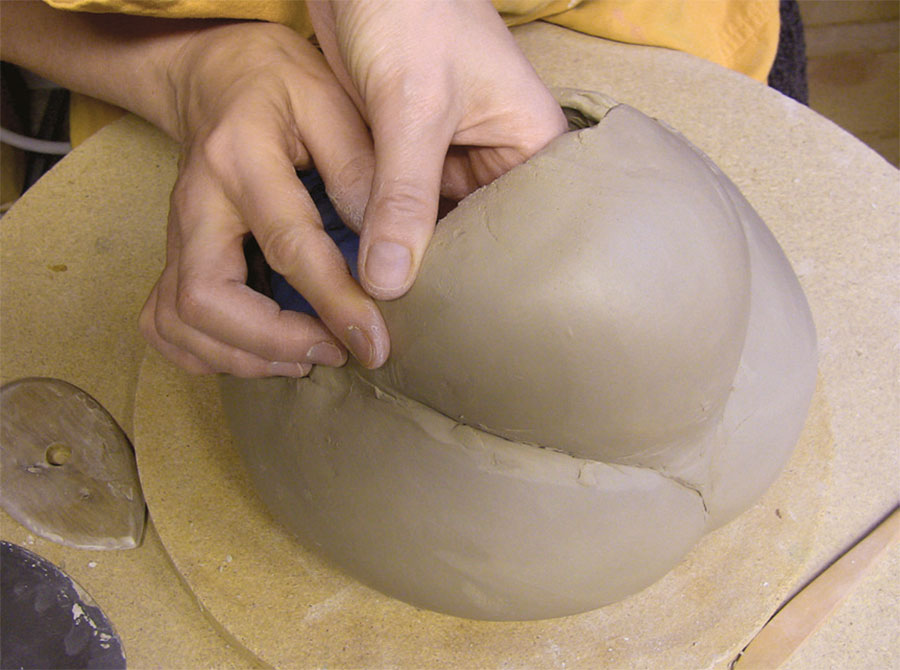
The magic of RAKU
Raku
The art of Raku has its origins in Japan in the 16th century. and is closely associated with the Japanese tea ceremony (and the tea bowls designed for it).
The potter who created these special tea bowls was awarded a golden seal with the inscription Raku - which means 'happiness/joy/contentment'. This name has been passed down through family dynasties in the traditional way for centuries. Since 1922, this technique has become increasingly popular in the West and has been adopted and further developed by contemporary artists worldwide.
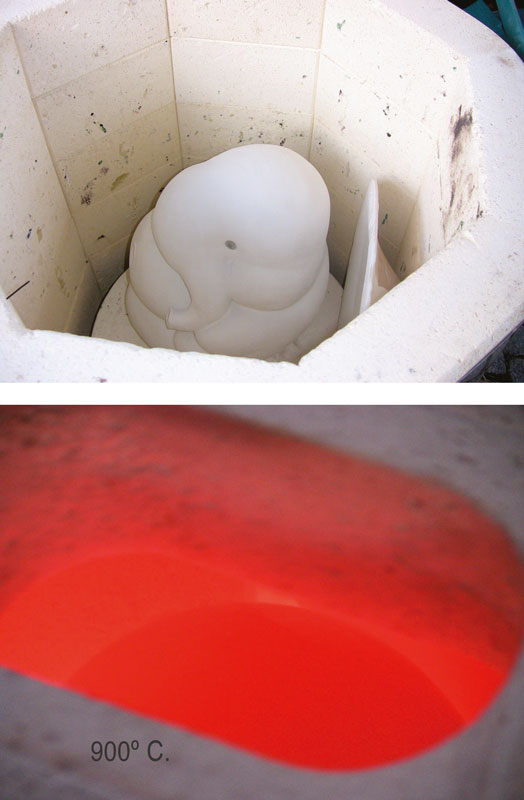
The technique of raku firing
First I form my figures from coarse-grained fireclay, which is specially designed to withstand large temperature fluctuations.
The air-dried figure is then 'raw-fired' and subsequently glazed.
During the actual raku firing, the still red-hot figure is removed from the gas kiln at around 1000º using special tongs and then
placed in a metal box filled with sawdust for 'smoking', which is then sealed airtight.
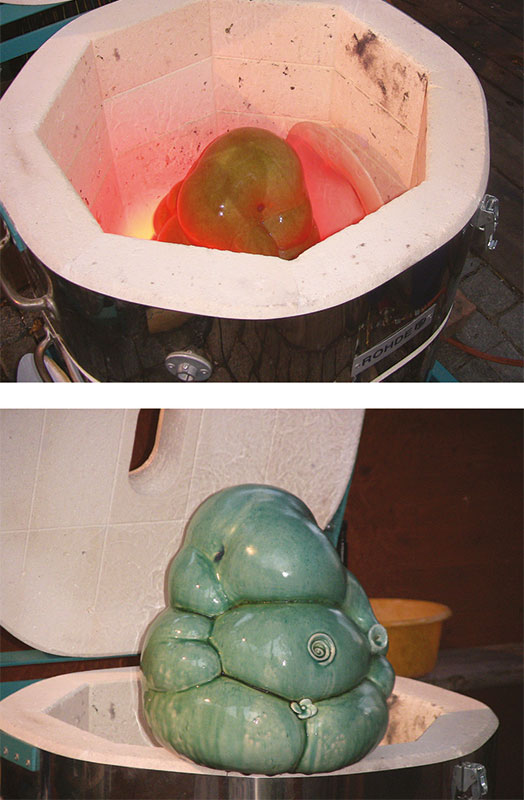
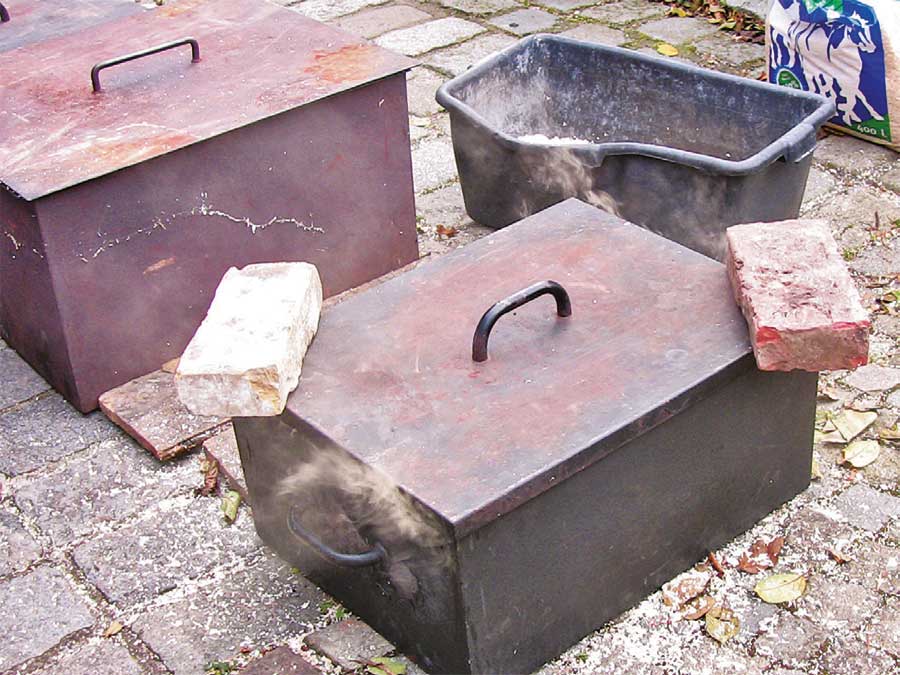
The heat from the clay figure ignites the sawdust.
The sudden shock-like cooling creates a fine network of cracks in the glaze - 'craquelée'.
The high heat of the clay glaze ignites the sawdust and the resulting smoke and the oxygen extraction create a so-called reducing atmosphere, which conjures up colorful, metallic and iridescent effects in the metal oxides added to the glaze.
The formation of the craquelée during raku firing.
After cooling, the still soot-blackened figure is washed off and only the fine cracks (craquelée) and the unglazed areas remain black, as this is where the charcoal could accumulate during 'smoking'.
This magical process of burning always adds something surprisingly different. It is under my control and yet has its own power.
The transformations in the fire create many beautiful effects and each figure is therefore unique.
